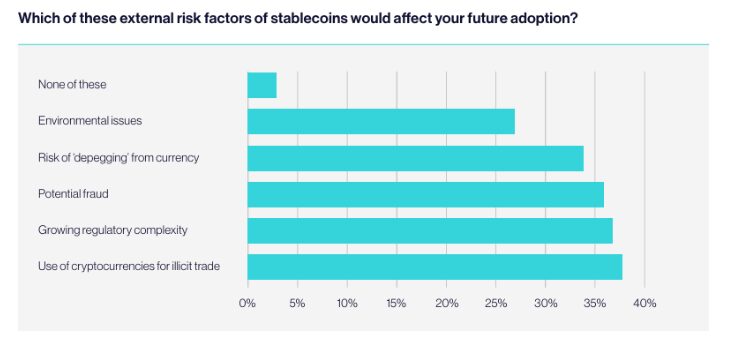YouTube’s ‘Gambling’ Update Sparks Crypto Fears — Here’s What’s Actually Changing
YouTube’s updated gambling policy, effective November 17, 2025, alarmed NFT and Web3 creators over potential content bans. The platform later clarified that videos showcasing digital assets are still allowed, provided they don’t promote casino-style gambling or financial returns. Enforcement will focus on gambling-related misuse of digital goods.
YouTube’s revised gambling policy, effective November 17, 2025, initially raised concerns that NFT and Web3 gaming content might be classified as gambling violations.
This policy update is in response to growing advertiser concerns about gambling-related content and addresses the evolving value of digital goods. While Web3 creators remain wary of potential impacts on monetized content, YouTube aims to balance regulation with creator freedom.
YouTube Policy Update Sparks Crypto Creator Concerns
On October 28, 2025, YouTube announced major updates to its Community Guidelines to enhance its management of online gambling and graphic violence in gaming.
The new policy bars content that directs viewers to uncertified gambling sites or applications. Importantly, it now includes gambling involving digital goods, such as video game skins, cosmetics, and non-fungible tokens (NFTs).
This announcement quickly generated concern among NFT and Web3 gaming creators. Many worried that the updated guidelines would ban content showcasing blockchain-based digital assets, which play a crucial role in the gaming NFT market.
Research shows that gaming NFTs reached a $4.8 billion valuation in 2024, with expected annual growth of 24.8% through 2034.
Creator LeevaiNFT voiced frustration on X (Twitter), describing the policy as harmful to Web3 gaming and Counter-Strike skins. His post captured the sentiment among creators who rely on YouTube to share and discover NFT content.
“YouTube’s new policy is a direct attack on Web3 gaming and CS skins. Starting November 17, any videos promoting NFTs, crypto tokens, or in-game skins with real value get hit as gambling violations. The end of an era… I discovered NFTs through YT,” Leevai lamented.
The main issue for creators is how YouTube will distinguish between “promoting” digital goods and simply displaying them in content.
The uncertainty over enforcement has introduced new risks for those who rely on crypto and Web3 gaming videos for monetization.
YouTube Clarifies Boundaries for NFT and Gaming Content
After receiving feedback, a YouTube spokesperson clarified to the media that:
- Showing video game skins or NFTs is still permitted under the new rules.
- The critical factor is whether content promotes casino-style gambling or promises financial returns.
- Educational videos, gameplay showcases, or discussions on blockchain technology that do not guide users to gambling platforms are outside the policy’s reach.
- YouTube will place age restrictions on social casino-style content, even if no real value is exchanged.
- Videos uploaded before November 17, 2025, that breach the new guidelines may be removed or age-restricted, but affected accounts will not receive strikes.
- Creators have been encouraged to use YouTube’s editing tools to ensure compliance before the deadline.
YouTube’s targeted enforcement focuses on content that encourages gambling using digital goods with real-world value, such as third-party sites where skins or NFTs are wagered in casino-like games.
The UK government’s September 2025 review on skins gambling supported regulatory oversight for in-game items with tradable, real-world value.
Meanwhile, Google’s system separately allows certified gambling operators to advertise under region-specific requirements. This creates additional complexity, and some creators argue that legitimate gambling advertisers are favored while independent creators encounter stricter controls.
Advertiser Pressure and the Future of Web3 Content
Several users have linked the update to advertiser demands, rather than a targeted move against crypto. One user on X reasoned that disabling monetization could resolve issues. This comes as large advertisers object to their ads running alongside gambling-related videos.
“Just disable monetization and you’re good. This is mostly because big advertisers complained about their ads being shown on gambling-related content,” a crypto YouTuber remarked.
This perspective matches broader industry trends. Platforms now face increased pressure to ensure brand safety, especially around content that deals with unregulated or high-risk financial activity.
However, creators who consistently produce high-quality Web3 and gaming content see the policy as significant for their monetization strategies.
LeevaiNFT recognized the influence of advertisers but questioned the fairness toward creators who produce legitimate content. He also scrutinized whether YouTube monetization is worth the additional regulatory challenges, especially when platforms like TikTok might offer more flexibility.
Still not fair to people like you that produce a lot of quality content about crypto and web3 gaming consistently.YouTube monetization is not that bad right?
— Leevai (@LeevaiNFT) October 31, 2025
As the November 17, 2025, enforcement date approaches, Web3 creators must decide whether to adapt their content, try other platforms like TikTok, or risk losing monetization.
While creators have some guidance, uncertainty around enforcement continues to present challenges for the community.
Disclaimer: The content of this article solely reflects the author's opinion and does not represent the platform in any capacity. This article is not intended to serve as a reference for making investment decisions.
You may also like
Enterprise AI’s Upheaval Drives Crypto’s Push into Private Markets
- C3 AI faces potential sale after founder Thomas Siebel's health-related CEO exit triggered a 6% stock surge. - The company reported $116.8M Q1 losses and 54% share price decline, now exploring private capital raises under new CEO Stephen Ehikian. - IPO Genie's $0.0012 presale token aims to bridge crypto and private markets using AI-driven deal-screening, attracting 300,000+ participants. - With $500M in regulated assets and CertiK-audited security, IPO Genie contrasts C3 AI's struggles by targeting 750×

European Tech Startups Eye Stablecoins, But Risks Stall Adoption

Stellar News Today: Turbo Energy's tokenization opens up clean energy investment to everyone
- Turbo Energy partners with Taurus and Stellar to tokenize hybrid renewable energy projects, targeting the $74.43B EaaS market. - The pilot uses blockchain to fractionalize solar storage PPA debt, leveraging Stellar's low-cost infrastructure for transparent green finance. - Tokenization aims to democratize clean energy investment, with Turbo's CEO highlighting scalability and security in AI-optimized storage solutions. - The initiative aligns with sustainable development goals, driving a 12.5% premarket s
Cardano News Update: MoonBull's AI Wager—Will It Surpass Cardano and Ethereum by 2025?
- MoonBull's $590,000 presale gains traction as a 2025 crypto contender, leveraging AI features and community governance. - Cardano partners with Wirex to launch ADA-branded crypto payment cards, aiming to bridge blockchain and traditional finance. - NFT and memecoin markets show 12-11% weekly gains, while Ethereum and TRON compete with MoonBull for 2025 growth narrative. - Regulatory risks and macroeconomic pressures persist, challenging projects like JFrog and Bumble amid crypto market volatility.
